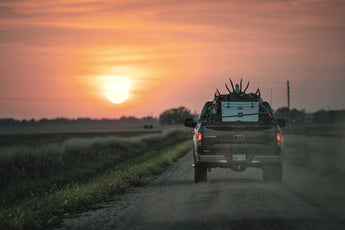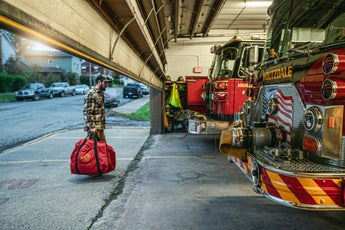Growing up in Iowa, deer hunting was something I fell into naturally. As a young kid, I impatiently waited for the day I could join my dad and grandpa on their annual hunts. When I finally got my chance I was already hooked for good, and that passion I felt as a 12 year old has only grown over the 25+ years since. Now I have sons of my own, and I’ve been fortunate enough to turn my passion for deer hunting into a career.
On top of my own pursuit for whitetail deer, I’ve now filmed and photographed countless hunts for others. I’ve had the opportunity to learn that there are many different approaches to hunting, many ways to define success, and that there’s always more to learn. I’ve also found that there are some constants, some key elements that are crucial to our success as hunters, whether we’re looking to fill the freezer or put a mount on the wall.
Set The Right Goals
One of the best things we can do to better enjoy our time outdoors, and help increase our chance of success, is to set realistic goals for the season. These goals need to change from year to year as we evolve as hunters. My goals as a 12 year old were much different than they are today. We also need to remember that all land is not created equal and the bucks that we see people harvesting on TV don’t live in every chunk of timber. You’ll never kill a 200 inch deer if you’re not hunting where 200 inch deer live. Set goals that will be tough to reach, but still reachable. Consider your current skill level, where you’d like to be by the season’s end, and the steps you’ll need to take in order to achieve those goals.

The Big Three
Just like people, deer need food, water, and cover (shelter) to survive and flourish. That’s true whether you’re hunting on private or public land. On land that you own or lease, you have the benefit of being able to manage forests and food plots to create the right habitat for the deer you’re targeting. For those who don’t have that in the budget, we’ll need to locate these things on public land.
Start by reading a couple of articles on the different types of cover deer call home, then the variety of foods that attract big deer. Lace up the boots and walk the piece of land you’re targeting until you identify an area where a deer’s basic needs are met. There are some new apps that allow you to research a property’s layout without pressuring it too much, but at some point you’ll need to do some first-hand scouting.

Under Pressure
Where you find the perfect habitat for deer, other hunters are likely nearby. Be mindful of accessibility and avoid investing too much time in a spot that will be easily reached or intercepted by your competition. Consider how deer will move once a crowd of hunters go marching into the woods. Develop a strategy for entering and exiting the woods so that you don’t bump your target deer out of his core area. When deer make contact with humans, they move. Have a plan for when your deer is bumped by another hunter so you’re not taken by surprise. If at all possible, your one and only encounter with your deer should be the moment you harvest it.
The Wind
Whitetail deer use the wind to steer clear of people like you, and the bigger the deer the better he is at using it to his advantage. Study the topography of the land you’re hunting, where deer are bedding and eating, and how they travel from a to b. Challenge yourself to think of the wind from a deer’s perspective, and how they may use it on a given night. Anticipating their entrance and exit points will allow you to position yourself just enough down wind to leave them feeling safe.

Timing
Food sources and bedding cover change throughout the season. In the midwest, fence lines and CRP fields can hold deer early, but when winter hits, those same deer will head for a south-facing slope. Food sources change continually as well. On top of diminishing resources due to farming and browse pressure, a deer’s body requires different nutrients as the season progresses. Do your best to understand and anticipate these changes, and you’ll put yourself in a better position to succeed.

Prepare For The Moment
Lord willing, you’ll find yourself facing a moment of truth this fall. That moment when all your hard work meets the opportunity you’ve been waiting for. Be ready to capitalize on that moment by putting in the reps needed to keep your composure in the face of all the excitement. Many have crumbled under the weight of that pressure, but not you. Shoot your bow or rifle until it’s second nature. Deer are challenging enough without your head getting in the way.


